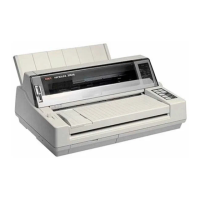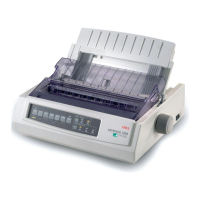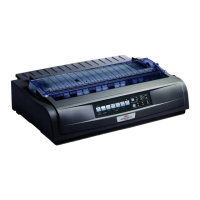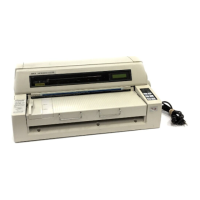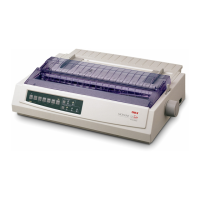Chapter 5: Custom Character Commands46
memory:
• you reset the printer with the ESC CAN command
• you overwrite them with new custom characters
• you use the ESC $ command to overwrite them with the Standard Character Set.
Custom Character Commands: 24-Pin Printers
Designing a Custom Character for 24-Pin Printers
The technique for designing your own custom characters is much like that of designing a
graphic image, but on a much smaller scale. You can design characters in either Utility or LQ
mode: simply activate the desired mode before you download the characters.
Begin by designing your character on a grid. The height of the grid is 24 dots, each
corresponding to a pin on the printhead. The width of the grid, as well as the width of the
character itself, depends on the print mode.
Table 35: Custom Character Commands —
Character/Grid Width for Print Modes (24-Pin Printers)
d
0
= space to the left of the character
d
1
= width of the character itself
d
2
= space to the right of the character
Print Mode Max. Character Width (d
1
) Max. Total Grid Width (d
0
+ d
1
+ d
2
)
Utility 15 dots 18 dots
LQ 37 dots 42 dost
Proportional 37 dots 42 dots
Note: If the printer is in superscript or subscript mode, only the first two or last two bytes are
needed for each column.
Characters are designed on a grid made up of columns of 24 dots. Each column, in turn, is
divided into three 8-dot groups, and each 8-dot group is represented by a byte of data.
When designing a character, keep the intended use for the character in mind. If the character is
to be included with text, leave the top and bottom two rows of the grid blank, in keeping with
general font design standards. The character's baseline occurs at the sixth dot from the bottom.
The columns of the grid to the left and right of your character affect where it will appear in
relation to the characters on either side. If you don't leave blank columns, adjacent characters
may appear to run right into your custom character.

